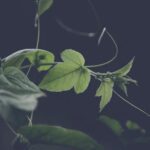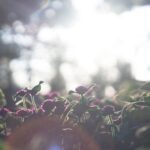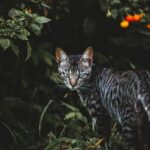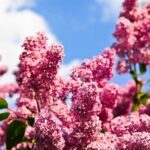Native pollinator gardens are becoming increasingly popular as people recognize the vital role that these gardens play in supporting and conserving native pollinators. These unique gardens provide a sanctuary for a variety of insects, birds, and other animals that are essential for the pollination of plants. The layout of a native pollinator garden is crucial in creating an inviting and nourishing habitat for these important creatures.
In this article, we will delve into the basics of understanding native pollinator gardens and their significance. We will explore how to choose the ideal location for your garden, design it using a step-by-step guide, and select native plants that will thrive in your specific area. Additionally, we will discuss incorporating nesting and shelter features to create a welcoming environment for pollinators.
Maintaining and caring for your native pollinator garden is essential for its long-term success, so we will provide you with tips on how to ensure its health and vibrancy. We will also delve into attracting a wide variety of native pollinators such as butterflies, bees, and beyond, emphasizing their importance in maintaining biodiversity.
Enhancing the aesthetics of your garden is also crucial, so we will share techniques on how to incorporate color and texture into your layout. Lastly, we will draw inspiration from real-life examples by presenting case studies of successful native pollinator garden designs.
By embracing the beauty and benefits of native pollinator gardens, not only do we create captivating spaces but also contribute to the preservation of natural ecosystems. So let’s dive in and discover how to layout our very own flourishing native pollinator garden design.
Understanding Native Pollinator Gardens
Native pollinator gardens are more than just beautiful spaces filled with flowers; they play a crucial role in supporting local ecosystems and promoting biodiversity. These gardens provide essential habitat and resources for native pollinators like bees, butterflies, and birds, which are key to the reproduction of many plant species. Understanding the basics of native pollinator gardens is essential if you want to create a space that not only looks stunning but also supports these important creatures.
What Are Native Pollinators?
Native pollinators refer to the diverse range of animal species that contribute to the pollination process in their respective habitats. Bees, butterflies, moths, beetles, flies, birds, bats, and even some mammals like squirrels and rodents can act as native pollinators. Unlike non-native or managed honeybees, native pollinators have coevolved with local plant species over thousands of years and therefore have an intimate relationship with them.
The Importance of Native Pollinator Gardens
One-third of all agricultural crops globally depend on animal pollination for reproduction. Native pollinators play a critical role in this process by transferring pollen between flowers while foraging for nectar or other rewards. By creating native pollinator gardens, we can provide these essential creatures with the food sources they need to survive and reproduce. This ultimately helps maintain healthy populations of both plants and animals in our ecosystems.
Benefits of Native Pollinator Gardens
In addition to supporting local ecosystems and promoting biodiversity, native pollinator gardens offer numerous benefits for humans as well. They enhance the beauty of our landscapes with vibrant colors and delicate fluttering wings while also attracting a variety of beneficial insects like ladybugs or lacewings that help control pest populations.
Furthermore, having a diverse population of native pollinators helps increase fruit set in gardens and improve crop yields. By understanding the basics of native pollinator gardens, you can contribute to the well-being of our natural world while creating a visually appealing and sustainable space.
Choosing the Ideal Location for Your Native Pollinator Garden
When it comes to designing a native pollinator garden, one of the most crucial steps is choosing the right location. The success and health of your garden depend on factors such as sunlight, soil conditions, and accessibility for both pollinators and gardeners. In this section, we will explore the key considerations for selecting an ideal location for your native pollinator garden.
First and foremost, sunlight is essential for the growth and vitality of your plants. Most native pollinator plants require at least six hours of direct sunlight each day. Observe your space throughout the day to determine which areas receive adequate sunshine. Keep in mind that trees or buildings may cast shadows that could impact your plant’s access to sunlight.
Next, consider the soil conditions in your chosen location. Native pollinator plants generally thrive in well-drained soil with ample organic matter. Conduct a soil test to assess its composition and make necessary amendments before planting. If your soil is sandy or heavy clay, you can improve its quality by adding compost or organic matter.
In addition to sunlight and soil conditions, accessibility is another critical factor to consider when choosing the ideal location for your native pollinator garden. Make sure the area is easily accessible not only for pollinators but also for yourself as a gardener. You will need enough space to navigate around the plants for maintenance tasks such as weeding, watering, and deadheading flowers.
By carefully considering these factors – sunlight, soil conditions, and accessibility – you can select an ideal location for your native pollinator garden that provides an optimal environment for both plants and pollinators.
| Considerations | Tips |
|---|---|
| Sunlight | Choose an area that receives at least six hours of direct sunlight per day. Ensure that the area is not shaded by trees or buildings. |
| Soil Conditions | Conduct a soil test to assess its composition. Add compost or organic matter to improve sandy or heavy clay soils. |
| Accessibility | Select a location that is easily accessible for you and pollinators. Leave enough space for maintenance tasks and ensure easy navigation around the plants. |
Designing a Native Pollinator Garden
- Research and Planning: Before starting your design, do some research on native plants in your area and the pollinators they attract. Consider the size of your garden space, sunlight availability, soil conditions, as well as your personal preferences for colors and textures. Make a list of plants that meet these criteria and plan their placement in your garden.
- Soil Preparation: Prepare the soil by removing any weeds or grass from the planting area. Loosen the soil with a shovel or garden fork to improve drainage and root penetration. Add organic matter, such as compost, to enrich the soil and provide essential nutrients for plant growth.
- Design Layout: Sketch out a rough plan of your garden layout before planting. Consider different heights, shapes, and colors when arranging the plants to create visual interest and variety in your design. Group plants together based on their watering needs to simplify maintenance.
Once you have completed these initial steps, you can proceed with planting and nurturing your native pollinator garden. Remember to water regularly, remove any invasive species or weeds that may compete with your plants for resources, and always be observant of any pests or diseases that may affect the health of your garden.
| Native Pollinator Gardens | Data |
|---|---|
| Total number of known pollinator species in the world | 20,000+ |
| Proportion of global food crops that depend on pollination | About 75% |
| Economic value of pollination services worldwide | Estimated at $235-577 billion annually |
| Number of native bee species in the United States alone | About 4,000 |
Selecting Native Plants for Your Pollinator Garden
Native plants play a crucial role in attracting and supporting native pollinators in your garden. By selecting the right plants, you can create a haven for bees, butterflies, and other pollinators, while also adding beauty and diversity to your landscape. In this section, we will provide you with a comprehensive plant list to help you choose the best native plants for your pollinator garden.
Factors to Consider When Choosing Native Plants
When selecting plants for your pollinator garden, there are several factors to consider. One important factor is the blooming period of the plants. It is recommended to choose a variety of plants that bloom at different times throughout the growing season. By doing so, you can ensure a continuous food source for the pollinators.
Another factor to consider is the type of flowers on each plant. Different pollinators have different preferences when it comes to flower shape and size. For example, bees are attracted to tubular-shaped flowers while butterflies prefer flat-topped or clustered flowers. By including a variety of flower shapes and sizes in your garden, you can attract a wider range of pollinators.
It is also essential to select plants that are native to your specific region. Native plants have evolved alongside local pollinators and are better suited to provide them with the resources they need. Additionally, native plants tend to be more resilient and require less maintenance compared to non-native species.
Comprehensive Plant List
Here is a comprehensive list of native plants that are known for their attractiveness to various types of pollinators:
- Monarda (Bee Balm)
- Asclepias (Milkweed)
- Echinacea (Purple Coneflower)
- Salvia (Sage)
- Agastache (Hyssop)
- Rudbeckia (Black-eyed Susan)
- Verbena
- Liatris (Blazing Star)
- Aster
- Phlox
This is just a small selection of the many native plants you can choose from for your pollinator garden. Consider researching additional native plants that are suitable for your specific region and the types of pollinators you wish to attract. By incorporating a diverse range of plants, you can create a vibrant and thriving ecosystem that supports native pollinators.
Remember, maintaining a healthy population of pollinators is essential for the overall health of our environment. By selecting native plants, you are not only providing food and habitat for these important creatures but also contributing to the conservation of local ecosystems.
Creating a Welcoming Habitat for Native Pollinators
Creating a native pollinator garden goes beyond planting flowers that attract bees and butterflies. To truly support these vital creatures, it is important to provide them with a welcoming habitat that includes nesting and shelter features. This section will explore different ways to incorporate these features into your garden design.
One key element to consider is providing suitable nesting sites for native pollinators. Many solitary bee species, for example, nest in cavities such as hollow plant stems or holes in dead wood. Incorporating bee houses or bundles of bamboo canes can provide these bees with places to lay their eggs and rear their young. Similarly, creating small piles of brush or leaving patches of bare ground can create homes for ground-nesting bees.
Shelter is another important aspect to consider when designing a native pollinator garden. Providing areas with dense vegetation or shrubs can offer protection from predators and extreme weather conditions. Tall grasses or wildflowers can also serve as windbreaks and create microclimates within your garden. Additionally, incorporating rocks or logs can provide basking spots for butterflies and other insects.
By incorporating nesting and shelter features into your native pollinator garden design, you are creating a more inviting environment for these beneficial creatures. Not only will they have places to rest and reproduce, but they will also be better equipped to withstand adverse conditions. In the next section, we will discuss maintenance and care tips for long-term success in maintaining your native pollinator garden.
| Feature | Benefit |
|---|---|
| Bee houses/bamboo canes | Provide nesting sites for solitary bees |
| Patches of bare ground | Create homes for ground-nesting bees |
| Dense vegetation/shrubs | Offer shelter from predators and extreme weather conditions |
| Tall grasses/wildflowers | Act as windbreaks and create microclimates within the garden |
| Rocks/logs | Provide basking spots for butterflies and other insects |
Maintenance and Care for Your Native Pollinator Garden
Now that you have designed and planted your native pollinator garden, it is important to understand how to properly maintain and care for it to ensure long-term success. Native pollinator gardens require regular maintenance to keep them healthy and thriving. Here are some tips to help you maintain your garden and support the native pollinators it attracts:
1. Watering: Just like any other garden, watering is essential for the health of your plants. However, it is important to water your native pollinator garden correctly. In general, deep watering once or twice a week is better than frequent shallow watering. This encourages deeper root growth and helps the plants become more resilient. You can also consider utilizing rain barrels or other water-saving techniques to conserve water.
2. Weeding: Regularly removing weeds from your pollinator garden is crucial to prevent them from overtaking your native plants. Hand-pulling weeds is recommended instead of using chemical herbicides, as these can harm both the beneficial insects and the plants in your garden.
3. Mulching: Applying a layer of organic mulch around your plants can help suppress weeds, retain soil moisture, regulate soil temperature, and improve soil quality over time. Additionally, mulch acts as a natural habitat for beneficial insects such as ground beetles and spiders, which prey on pests.
4. Deadheading: Removing spent flowers or seed heads-also known as deadheading-is an important maintenance task for a native pollinator garden. Deadheading encourages continuous blooming throughout the season by stimulating new flower growth and prevents self-sowing of unwanted plant species.
5. Monitoring for pests: Regularly inspecting your plants for signs of pest damage is crucial in maintaining their health. If you notice any pest infestations, consider adopting integrated pest management strategies such as handpicking insects or using organic insecticides sparingly.
Attracting a Variety of Native Pollinators
Native pollinator gardens are not only beautiful additions to any landscape, but they also play a crucial role in supporting the ecosystem. By attracting a wide variety of native pollinators such as butterflies, bees, and other insects, these gardens help to ensure the reproduction of plants and contribute to biodiversity. Here are some tips on how to attract different types of native pollinators to your garden.
Creating a Butterfly-Friendly Garden
Butterflies are not only mesmerizing creatures but also important pollinators. To attract butterflies to your native pollinator garden, it is essential to include plants that caterpillars feed on as well as nectar-rich flowers for adult butterflies. Some popular choices for butterfly-friendly plants include milkweed, asters, coneflowers, and buddleia (also known as butterfly bush).
Additionally, providing a source of water is crucial for butterflies. Shallow dishes or birdbaths with rocks or sand in them can serve as drinking spots where butterflies can perch safely. It is important to keep the water clean and fresh.
Welcoming Bees Into Your Garden
Bees are perhaps the most well-known pollinators due to their crucial role in agriculture and plant reproduction. To attract bees to your native pollinator garden, it is important to provide a wide variety of flowering plants that bloom at different times throughout the year. This will ensure a continuous supply of nectar for bees.
Planting flowers that have different shapes and sizes can also be beneficial as different species of bees may prefer certain flower shapes over others. Be sure to choose native plants that are adapted to your specific region’s climate and soil conditions.
Other Native Pollinators
It’s not just bees and butterflies that contribute to pollination. There are a variety of other native pollinators such as beetles, birds, moths, and flies that also play an important role. To attract these pollinators to your garden, it is important to provide a wide range of flowers in different colors, sizes, and shapes. By diversifying your plant selection, you can create an inviting environment for a variety of native pollinators.
By incorporating the right plants and providing water sources for butterflies and creating a diverse flower selection to attract bees and other pollinators, you can ensure that your native pollinator garden becomes a haven for a variety of species. Embracing the beauty and benefits of attracting different types of native pollinators will not only enhance the biodiversity of your garden but also contribute to the health and sustainability of our ecosystem.
Enhancing the Aesthetics of Your Native Pollinator Garden
When designing a native pollinator garden, it is important to not only create a welcoming habitat for native pollinators but also to enhance its aesthetics. By incorporating color and texture, you can create a visually appealing garden that attracts both pollinators and human admirers.
One way to enhance the aesthetics of your native pollinator garden is by selecting plants that offer a variety of colors. Consider including flowers in different shades of purple, pink, yellow, and blue to create a vibrant and visually stimulating display. Additionally, incorporating plants with different bloom times can provide continuous color throughout the growing season.
Texture is another important element to consider when designing your garden. Mixing plants with varying leaf shapes and textures adds visual interest and creates a dynamic landscape. For example, you can combine plants with broad leaves alongside those with fine, delicate foliage. Incorporating grasses or ornamental plants with unique textures can also add depth to your garden design.
To further enhance the aesthetic appeal of your garden, you can use strategic placement and grouping techniques. Planting in clusters or drifts rather than scattering individual plants can create a more cohesive look. Additionally, consider layering plants of different heights and spreading them out in a way that creates natural-looking patterns.
By paying attention to color and texture when designing your native pollinator garden, you can create an aesthetically pleasing space that not only attracts native pollinators but also provides enjoyment for yourself and others who visit your garden.
Case Studies of Successful Native Pollinator Garden Designs
As more and more people recognize the importance of native pollinator gardens, there is a growing interest in seeing real-life examples of successful designs. Case studies provide valuable insight and inspiration for those looking to create their own pollinator-friendly spaces.
One such case study is the Smith Family Garden, located in a suburban neighborhood. The family transformed their conventional front yard into a vibrant native pollinator garden bursting with color and life.
By carefully selecting a variety of native plants that bloom at different times throughout the year, they were able to provide a consistent food source for pollinators from early spring to late fall. In addition to flowers, they incorporated several nesting features such as bee blocks and butterfly houses to attract and support different species.
In another case study, the Jones Community Garden demonstrates how an urban space can be transformed into a thriving haven for native pollinators. With limited square footage, the designers prioritized vertical gardening by utilizing trellises and hanging baskets filled with native flowering vines.
This not only maximized the planting area but also offered additional opportunities for bees and butterflies to access nectar-rich blooms at varying heights. The garden serves as an educational resource for the surrounding community, showcasing how even small spaces can make a big impact on local pollinator populations.
These case studies highlight the versatility of native pollinator gardens and offer ideas for incorporating different elements into your own design. By learning from what has worked well in these real-life examples, you have a better understanding of how to create your own successful space that supports native pollinators while adding beauty and diversity to your surroundings.
Conclusion
In conclusion, native pollinator gardens play a crucial role in supporting biodiversity and sustaining our ecosystem. By understanding the basics of these gardens and choosing the ideal location, we can create spaces that are not only aesthetically pleasing but also beneficial for our native pollinators. Designing a native pollinator garden requires careful consideration of layout, plant selection, and incorporating nesting and shelter features.
To ensure the long-term success of your native pollinator garden, it is important to regularly maintain and care for it. By following tips such as providing adequate water sources, controlling pests naturally, and avoiding harmful chemicals, you can create a healthy habitat for your pollinators. Additionally, attracting a variety of native pollinators like butterflies and bees can be achieved by selecting plants that provide food throughout the year and creating diverse microhabitats.
Incorporating color and texture into your design is not only visually appealing but also serves to attract different pollinator species. By combining various flowering plants with different heights and shapes, you can create a landscape that is vibrant yet functional. Drawing inspiration from real-life examples through case studies can further enhance your understanding of successful native pollinator garden designs.
In summary, embracing the beauty and benefits of native pollinator gardens is not only fulfilling but also essential for our environment. These gardens provide food sources for our local wildlife while contributing to the overall health of our ecosystem. So whether you have a small yard or a large plot of land, consider creating a native pollinator garden to make a positive impact on our world.
Frequently Asked Questions
How Do You Layout a Pollinator Garden?
Layouting a pollinator garden involves careful consideration of several factors. Firstly, it’s essential to choose a sunny location as most pollinator plants thrive in direct sunlight. Next, you should analyze the soil type and drainage to determine which plants will flourish in that environment. It’s important to include a variety of flowers that bloom at different times throughout the year, ensuring a continuous food source for pollinators.
Grouping plants together in clusters can help attract pollinators more effectively. Additionally, incorporating native plant species is beneficial as they have co-evolved with local pollinators and provide familiar nectar sources. Finally, don’t forget to provide water sources like birdbaths or shallow dishes filled with pebbles for butterflies and bees to drink from.
What Is a Good Size for a Pollinator Garden?
The size of a pollinator garden depends on various factors such as available space, resources, and time commitment. While smaller gardens can still be beneficial for attracting pollinators, a good size for a pollinator garden is typically around 100 square feet or larger.
This provides ample room to incorporate a diverse range of plant species that will attract different types of pollinators. However, even if you only have limited space available like a balcony or small yard, you can still create container gardens or vertical gardens with appropriate flowering plants to attract and support pollinators.
How Do You Prepare Ground for Pollinator Garden?
Preparing the ground for a pollinator garden involves a few key steps. First, clear the area of any existing vegetation by removing weeds or grasses manually or by using natural weed control methods instead of synthetic herbicides that may harm pollinators directly or indirectly.
Once the area is cleared, loosen the soil with a garden fork or tiller to improve its structure and drainage capacity. Amend the soil with organic matter like compost to increase its fertility and moisture-retaining capacity while also promoting beneficial microbial activity that aids plant growth.

Welcome to my gardening blog! I am passionate about plants and enjoy sharing my knowledge and experiences with others. In this blog, I will write about everything related to gardening, from tips on how to get started to updates on my own garden projects.





